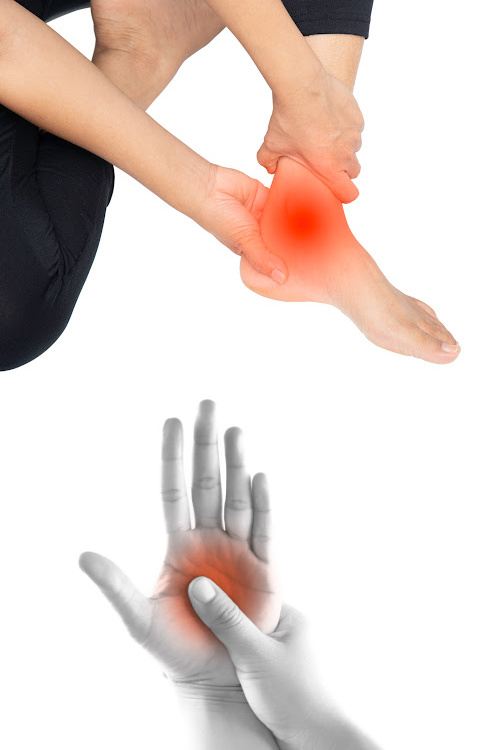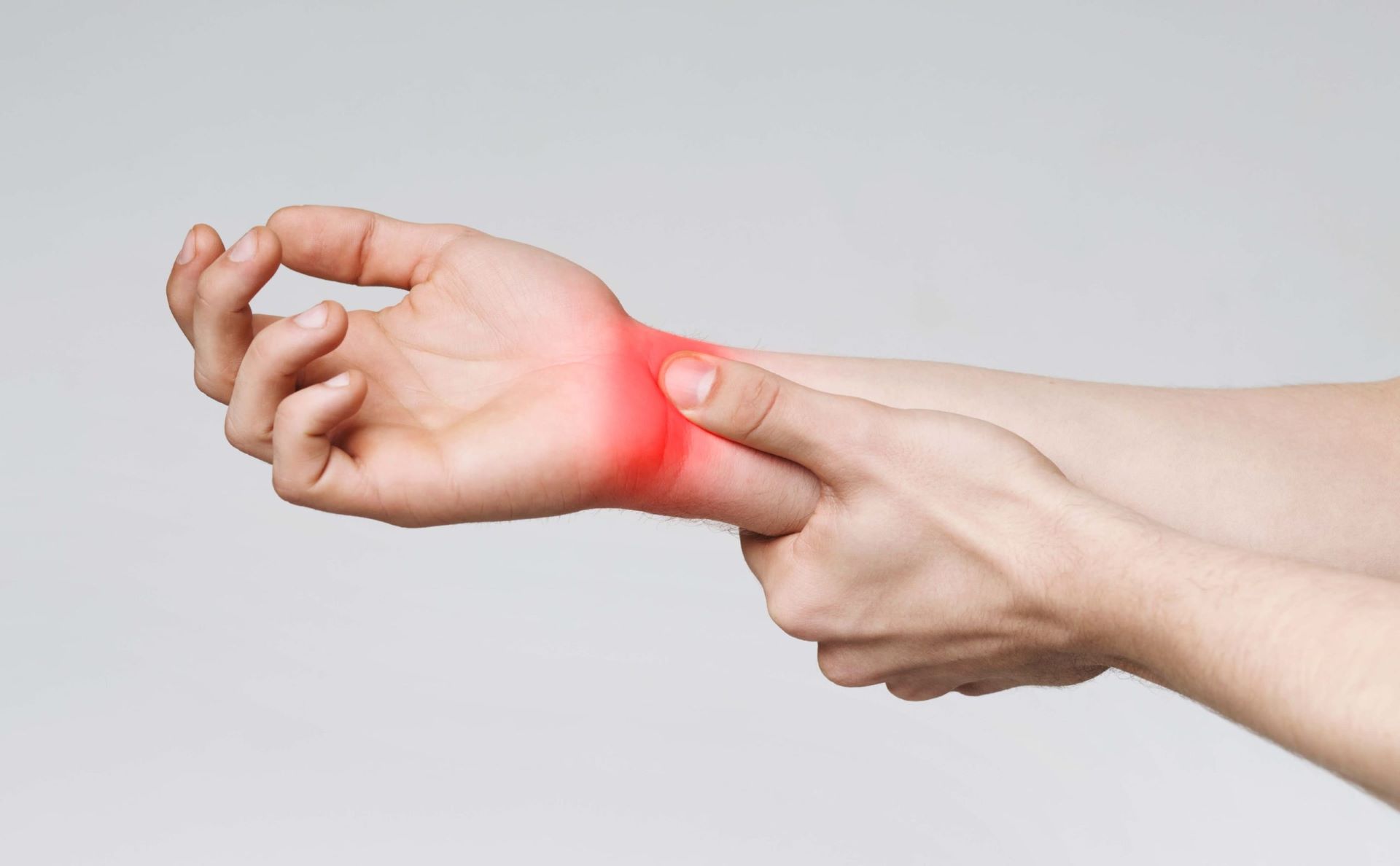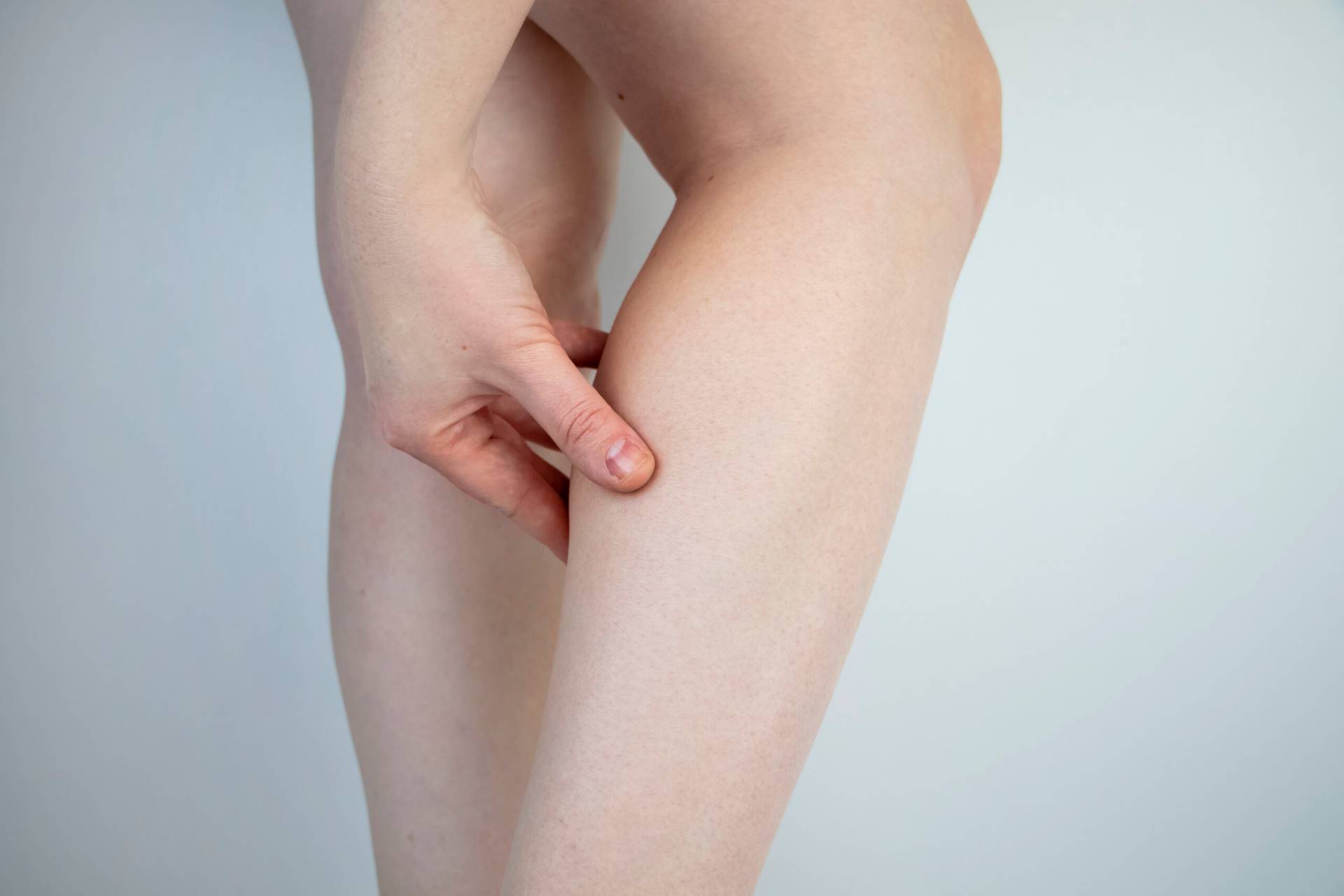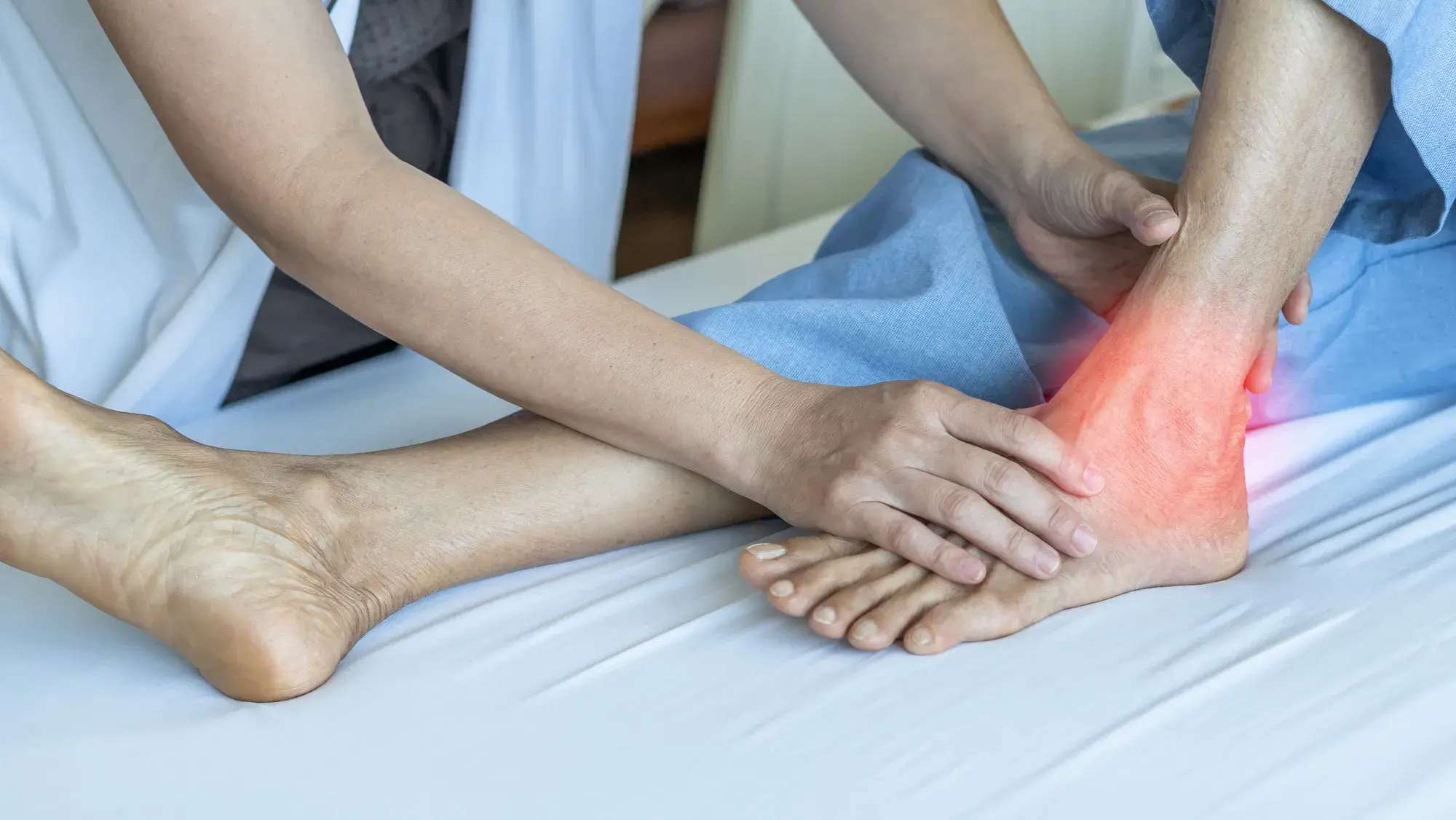Paresthesia is the medical term to describe a tingling sensation in parts of the body, most notably in the hands or feet. It can manifest as a prickling feeling, numbness, burning, and shooting pain. Although these sensations are usually harmless, they can also indicate an underlying problem – especially if accompanied by other symptoms, such as pain, headaches, vertigo, or muscle weakness. We treat chronic pain and inflammation by addressing underlying neurological factors that may also be causing tingling sensations in your hands and feet.
Defining Tingling Or Prickling Sensation In Feet Or Hands
Paresthesia can be described as tingling, itching, burning, freezing, or a feeling of ants crawling on the skin. It can be accompanied by numbness or decreased sensitivity to touch in the area affected. Sometimes, the person may even experience shooting pain that is usually brief and localized. Other related symptoms include swelling, muscle weakness, and loss of function in the affected area.
The paresthesia may be felt on one side of the body or both sides at once and usually occurs spontaneously. The intensity of the feeling can range from mild to severe, and the sensation may come and go or be constant over time.
Other Possible Sensation Sites
Tingling is often not limited to just the hands or feet. Prickling sensations can also be felt in other parts of the body, such as the back, arms, legs, toes, fingers, and heels. In some cases, people may even experience a tingling sensation in their face or scalp.
Possible Causes Of The Tingling Sensation In Hands
There are many potential causes of paresthesia, including the following:
- Prolonged standing or sitting: Prolonged standing or sitting can cause a tingling sensation due to poor circulation in the legs and feet. Poor circulation can cause tingling sensations due to a lack of oxygenated blood reaching the extremities.
- Nerve injuries and pressure: Pressure on a nerve or an injury to the nerves can cause tingling sensations in the affected area. When a nerve is irritated or damaged, it can cause the nerve to send signals that create sensations such as tingling or prickling.
- Inflammation in the blood vessels: Blood vessel inflammation can cause tingling sensations due to a decrease in oxygenated blood reaching the extremities. Various conditions can lead to inflammation of the blood vessels, such as diabetes and lupus.
- Infections: Infections such as herpes zoster (shingles) can cause tingling sensations in affected areas. Bacterial or fungal infections may also cause tingling sensations due to the body’s response to the infection.
- Insect and other animal bites: Bites from insects or other animals can cause tingling sensations due to the body’s reaction to the venom or infection. The tingling sensation usually occurs in the area around the bite.
- Deficiency or abnormal levels of nutrients in the body: Certain vitamins and minerals are essential for nerve function, and a deficiency or an abnormal level of these nutrients can lead to tingling sensations. For example, a vitamin B12 deficiency can cause tingling in the hands and feet due to the lack of nourishment that the nerves need to stay healthy.
- Consumption of certain medicines: Certain medicines, such as chemotherapy drugs and anticonvulsants, can cause tingling sensations in the body due to nerve damage or inflammation.
- Nerve damage due to alcohol, smoking, and toxins: Excessive alcohol consumption, smoking, and exposure to toxins can result in nerve damage and lead to tingling sensations.
Medical Conditions Causing Prickling Or Tingling Sensation In The Hands/Feet
Many common causes of prickling or tingling sensations in the hands and feet can be addressed via lifestyle changes, whether it’s taking vitamin supplements, cutting back on alcohol consumption, stopping smoking, changing medications, or becoming more active if you live a sedentary lifestyle.
However, in some cases, tingling or prickling sensations can be a symptom of an underlying condition, such as:
Peripheral Neuropathy
Peripheral neuropathy is caused by peripheral nerve damage. Peripheral nerves are responsible for carrying information from the brain and spinal cord to other parts of the body. It can be caused by diabetes, genetic factors, autoimmune diseases, or injury. Symptoms of peripheral neuropathy may include tingling sensations, numbness, weakness in the limbs, burning pain, muscle cramps, and loss of balance.
Sciatica
Sciatica is when the sciatic nerve becomes compressed, which can result in pain in the lower back, hips, and legs. The sciatic nerve is the body’s longest and widest nerve. It runs from the lower back, through the hips and buttocks, and down each leg.
Sciatica usually occurs on one side of the body. It can be accompanied by tingling sensations, numbness, burning pains, and muscle weakness. It is often caused by underlying conditions such as injury to the spine or a herniated disk.
Migraines
A migraine is a condition that often results in throbbing, one-sided headaches that can last from several hours to several days. They may be accompanied by visual disturbances, nausea and vomiting, sensitivity to sound and light, and tingling or prickling sensations in the hands and feet. Migraines can also lead to other symptoms, such as dizziness, vertigo, fatigue, and confusion. Migraine attacks can be triggered by stress, certain foods, or changes in the weather.
Restless Leg Syndrome
Restless leg syndrome (RLS) is a condition known for causing an uncontrollable urge to move one’s legs. It can lead to tingling or prickling sensations in the legs as a result of nerve damage. RLS can disrupt sleep patterns and cause extreme discomfort, leading to fatigue and irritability during the day. The exact cause of RLS is unknown, but it is often associated with iron deficiency, nerve damage, and certain medications. RLS is more common in older adults and can also be triggered by pregnancy, certain medications, and genetics.
Tarsal Tunnel Syndrome
Tarsal tunnel syndrome is a condition caused by compression or damage to the tibial nerve, which runs from the inside of the ankle to the foot. The tarsal tunnel is a narrow space that lies on the inside of the ankle and contains arteries, veins, tendons, and nerves. As a result, the condition can cause tingling sensations in the feet because of nerve damage or compression. It can also cause pain, numbness, and a burning sensation in the feet. Tarsal tunnel syndrome often occurs due to injury, repetitive stress, or underlying medical conditions such as diabetes or arthritis.
Multiple Sclerosis (MS)
MS is an autoimmune disorder. It affects the brain and spinal cord and often causes distorted or blurred vision, slurred speech, difficulty walking, loss of coordination, fatigue, numbness or tingling in the limbs, and weakness in one or more extremities. MS is a condition in which the myelin (the protective covering of nerve cells) is attacked by the body’s own immune system.
Diabetes
Diabetes is caused by the body’s inability to produce or respond to insulin, which can lead to high blood sugar levels. High blood sugar levels can damage the nerves and cause tingling sensations in the extremities. Other symptoms of diabetes include excessive thirst, frequent urination, unexpected weight loss, increased appetite, blurred vision, and fatigue. Diabetes can be caused by genetic predisposition, certain medications, infections, and other medical conditions.
Radiculopathy
Radiculopathy occurs when the spinal nerve roots become compressed, which can lead to pain, numbness, tingling sensations, or muscle weakness in the affected area. It can be caused by an injury or damage to the spine, such as the narrowing of the spinal canal (spinal stenosis) or a herniated disc. This condition usually affects one side of the body.
Carpal Tunnel Syndrome
Carpal tunnel syndrome occurs when the wrist’s median nerve becomes compressed. It can cause tingling, numbness, and pain in the hand and fingers. Other symptoms include:
- Weakness in the affected hand
- Aching or burning sensations in the palm of the hand or thumb area
- An inability to grip objects properly
It is often caused by repetitive motions such as typing, using tools, or playing certain sports.
When The Tingling Sensation Is Not Normal
It is essential to seek medical attention if the tingling or prickling sensations persist, worsen, or are accompanied by other symptoms. If you experience any of the following symptoms with your tingling sensations, you should seek medical attention as soon as possible:
- Uncontrollable shaking
- Severe headaches
- Muscle weakness
- Loss of vision, or
- Balance problems
You should also seek medical attention if you experience any signs of infection, such as a fever, redness, or swelling in the affected area. In some cases, tingling sensations are the result of an underlying medical condition, which is why they should be evaluated by a doctor for accurate diagnosis and treatment. These conditions can cause further damage and worsen the symptoms if left untreated.
Conventional Medical Treatment Options
How a doctor treats the prickling or tingling sensations you’re experiencing will depend on the diagnosis. In some cases, lifestyle changes may be enough to manage symptoms and reduce discomfort. This could include exercise, getting the correct amount of rest, eating a well-balanced diet, or taking vitamin supplements.
For many medical conditions causing tingling sensations, such as diabetes or multiple sclerosis, most doctors will recommend one or more of the following conventional treatment options:
- Medications
Medications can be used to manage pain and reduce inflammation. Depending on the diagnosis, a doctor may recommend over-the-counter or prescription medications such as nonsteroidal anti-inflammatory drugs (NSAIDs), steroids, tricyclic antidepressants, anticonvulsants, or opioids.
However, there are some drawbacks to taking medications to manage tingling sensations. First of all, anti-inflammatory pain medications can only provide temporary relief. Secondly, there are a lot of potential side effects depending on the drugs you’re taking, especially if they are opioids. These side effects can include nausea, constipation, drowsiness, and more. Additionally, some of them can be habit-forming.
- Physical or occupational therapy
Physical or occupational therapy can help manage pain and reduce inflammation. This type of treatment involves exercises, stretches, and sometimes the use of special equipment designed to alleviate symptoms. It can also involve implementing lifestyle changes such as stress-reduction techniques, ergonomic adjustments for workstations, posture correction, and nutrition advice.
Physical or occupational therapy can help strengthen the muscles and joints in the affected area, improving mobility and reducing pain, and potentially limiting tingling sensations, depending on the underlying cause.
- Nerve injections
If medications and physical or occupational therapy are not providing enough relief, a doctor may recommend nerve injections. These injections can include steroids, local anesthetics, or botulinum toxins to help reduce inflammation and pain in the affected area. However, these treatments are more invasive than other options and should only be used if all else fails. Several potential complications can arise from nerve injections, such as infection, nerve damage, or a weakening of the immune system.
- Transcutaneous electrical nerve stimulation (TENS)
TENS is a form of electrotherapy that uses electrical signals to stimulate the nerves to reduce pain and improve circulation. It is often used to treat chronic pain, muscle stiffness, and tingling sensations. During a TENS treatment session, electrodes are placed on the skin in the affected area, and an electric current is delivered through them. The electrical signals block pain signals from reaching the brain and can also stimulate the body to release more endorphins, which are essentially natural pain relievers.
TENS is a non-invasive procedure with few side effects and is relatively safe when used correctly. However, due to the low pulse rate, TENS is only effective for treating milder symptoms and will only provide short-term relief.
Our Approach To Relieving Tingling Sensations And Pain
Neuragenex Neurofunctional Pain Management treats chronic pain and inflammation. This approach addresses the underlying neurological factors that contribute to pain and inflammation. Because tingling sensations are often nerve-related, our treatment methods can be used to help reduce such symptoms as well. The following are the treatment modalities that we can leverage to help relieve both tingling sensations and pain:
Electroanalgesia
Electroanalgesia is a pain management technique that uses high-pulse electrical current to ease pain, boost blood circulation, improve mobility, and induce...
Read More About Tingling Sensation in Hands and Feet Electroanalgesia
IV Therapy
IV nutritional therapy, or intravenous therapy, involves administering vital nutrients directly to the bloodstream through an IV. This type of treatment bypasses the digestive system, allowing for maximum absorption and utilization of nutrients by the...
Read More About Tingling Sensation in Hands and Feet IV Therapy
Lifestyle Counseling
Lifestyle counseling is an approach to managing chronic pain that involves identifying, assessing, and modifying lifestyle factors contributing to an individual's pain. For example, lifestyle factors such as nutrition, physical activity, stress, sleep quality...
Read More About Tingling Sensation in Hands and Feet Lifestyle Counseling
Painful Symptoms We Manage
Because Neuragenex Neurofunctional Pain Management is designed to treat the neurological factors contributing to chronic pain and inflammation, we can treat pain associated with the following health conditions that can also cause prickling and tingling sensations:

Chronic Migraines And Headache Pain Treatment
Chronic migraines and headaches can cause severe pain, blurred vision, and fatigue. Experiencing these symptoms on a regular basis can be debilitating and can affect your quality of life. Our pain management approach can help you reduce the frequency,...

Peripheral Neuropathy Pain Treatment
We offer a unique and leading-edge approach to treating the burning, tingling, throbbing pain that may be associated with peripheral neuropathy or nerve damage. We have helped 100’s of patients, just like you, reduce their pain fast and get back to living...

Carpal Tunnel Syndrome Pain Treatment
Carpal tunnel syndrome is a condition that can cause debilitating pain and weakness in the hands, wrists, and arms. If you're suffering from this condition, our non-invasive, non-chiropractic treatment can provide quick relief from pain, improved grip...

Sciatica Pain Treatment
Sciatica can be a debilitating condition, causing intense pain and discomfort that can make it difficult to perform daily activities or even move around. We offer a safe, non-surgical, non-chiropractic, and drug-free treatment option that can help provide...

Restless Leg Syndrome Pain Treatment
RLS is a condition that causes an urge to move the legs, and can lead to discomfort, pain, exhaustion, and difficulty sleeping. Neuragenex NFPM is a non-pharmaceutical, non-chiropractic, and non-surgical (therefore, non-invasive) solution for restless leg...

Tarsal Tunnel Syndrome Treatment
Tarsal tunnel syndrome is a painful disorder that affects the foot and ankle. It develops when the tibial nerve, which runs through a narrow space called the tarsal tunnel, becomes compressed or...
Stop Tingling, Regain Sensation
Tingling sensations can indicate an underlying medical condition and should not be ignored. If you are experiencing any signs or symptoms, it is crucial to seek medical attention so that the root cause can be identified and treated. Neuragenex Neurofunctional Pain Management approach leverages several treatment modalities to help relieve both tingling sensations and pain caused by various health conditions by addressing the underlying neurological factors that may be contributing to your symptoms.
Got tingling and prickling sensation in the hands or feet related to peripheral neuropathy?




